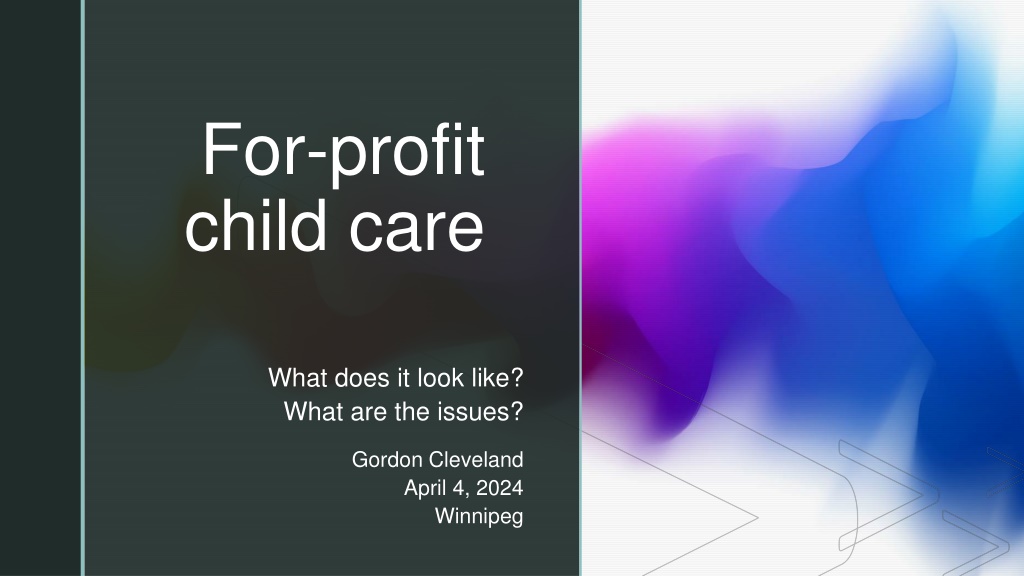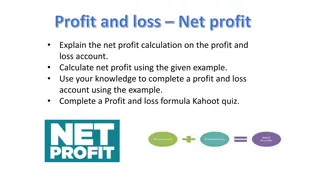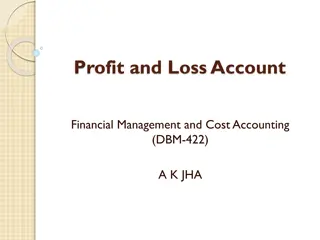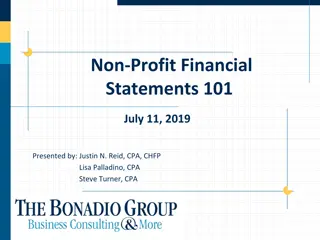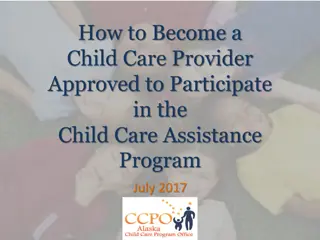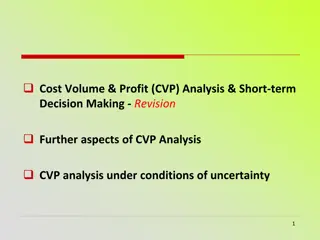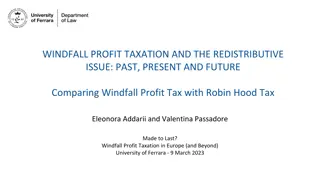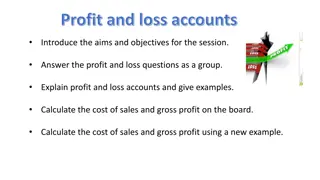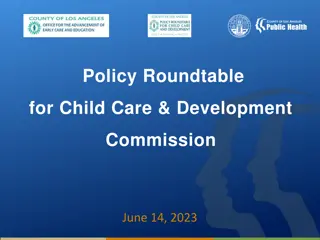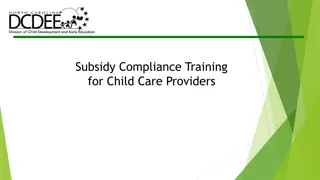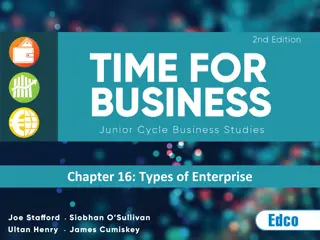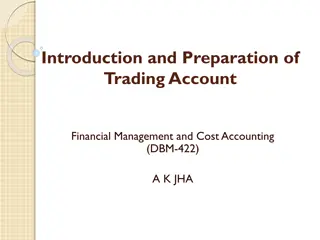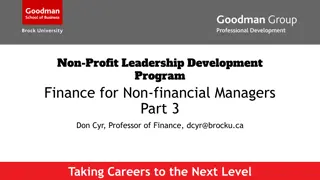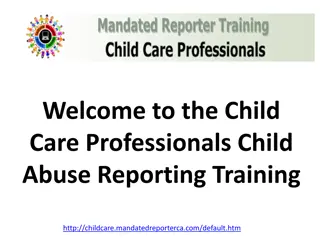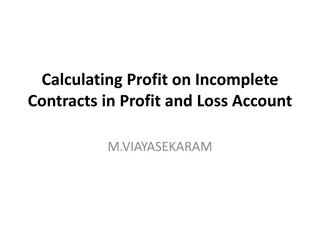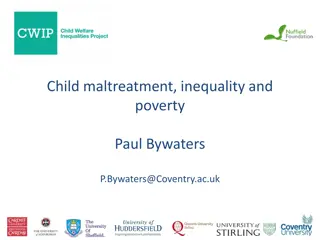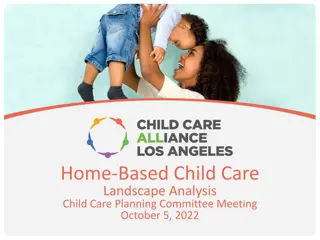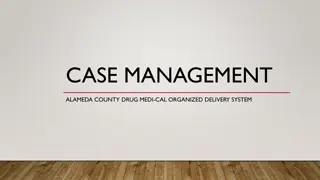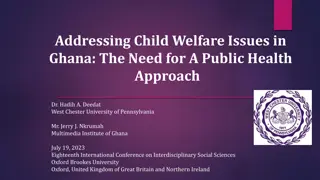Issues and Trends in For-Profit Child Care: A Comprehensive Overview
The prevalence of for-profit child care centers in Canada is on the rise, with about 29% of center spaces dedicated to for-profit services in 2021. Ontario's childcare landscape shows a significant presence of both non-profit and for-profit multi-site groups. International examples from countries like Australia, New Zealand, and Norway highlight potential dangers of rapid for-profit expansion, including affordability issues and regulatory concerns. These trends underscore the importance of monitoring and addressing expansion practices in the for-profit child care sector.
Download Presentation

Please find below an Image/Link to download the presentation.
The content on the website is provided AS IS for your information and personal use only. It may not be sold, licensed, or shared on other websites without obtaining consent from the author. Download presentation by click this link. If you encounter any issues during the download, it is possible that the publisher has removed the file from their server.
E N D
Presentation Transcript
For-profit child care What does it look like? What are the issues? Gordon Cleveland April 4, 2024 Winnipeg
29%? In 2021, 29% of centre spaces were for- profit (for children 0-12 years). About 400,000 spaces out of 1.4 million. Canada: How Much For-Profit Child Care? It was 30% in 1992. Down to 20% in 2004. Rising to 29% in 2021.
0% - 70%? % of Centre-Based Child Care That is For-Profit (2021) 70 60 50 40 30 20 10 0 % of centre care that is for-profit (2021)
How much for-profit child care? 52%? Look only at full-day child care and the picture looks different again Full-day child care excludes part-day preschools and before-and-after school care for kindergarten and above In 2021, in centre-based full-day spaces, for-profit child care accounted for 52% of spaces (vs. 12% for part-day spaces).
In 2021, Ontario had about 150 non-profit or public multi-site groups. These were about 64% of all NP or P centres E.g., YMCA of Greater Toronto 303 centres, PLASP 256 centres, YMCA of Southwestern Ontario 105 centres. 32 more multi-site groups with more than 15 centres in their groups. Details in Ontario Multi-site group = a group of 5 or more centres with same licence holder Ontario had about 16 for-profit multi-site groups. This was about 20% of all FP centres E.g., BrightPath 49 centres, Kids and Company 33 centres, 4 more groups with 10 or more for-profit centres. Large majority of for- profit centres are sole proprietorship or fewer than 5 centres in group. My opinions: Current Ontario government has adopted funding and wage policies that promote multi-site for-profit child care in contradiction to its CWELCC obligations. We need to put resources into tracking expansion and behaviour by auspice across Canada
International examples warn of dangers of for-profit expansion When there are supply shortages and substantial public funding and weak controls, large for-profits have expanded rapidly. With negative consequences. Australia virtually all the expansion of long day care for 10 years has been in the for-profit sector. Facilitated by absence of fee controls and demand-side funding. About 70% of centre spaces are for-profit. The average fee is now about $135 per day. Despite substantial subsidies, most families only use about 3 days a week. New Zealand Supply-side funded but no fixed fees. Progressive curriculum. But now the least affordable child care amongst OECD countries. Now 74% of education and care services are for-profit with a lot of big-box child care Norway known for its good child care system. But after 2003, Norway needed rapid expansion to provide child care as entitlement. Market share of six largest for-profit chains rose from 11% to 32% in about 10 years. Weak regulation and blindness to auspice issues.
Much of my research with colleagues on auspice (and that of other researchers) has focused on quality City of Toronto (2008): consistent and substantial quality differences between commercial, not-for- profit and public providers of child care. Linked to wages and staff qualifications. Quality is a key issue Grandir en Qualit (2003 study) a consistent 10% quality advantage for CPEs relative to for-profit garderies, even holding other quality-related factors constant. Thick and thin markets (2009) using Canada-wide You Bet I Care! data showed that thick markets facilitate the not-for-profit quality advantage
To design the tools of public management we need to go further Other issues strongly related to auspice and the profit motive: Location of services where the combination of need and demand is greatest vs. Location of services where profit returns are highest Universal access for all children, with extra funding where costs are higher vs. Manipulating access so that your centre serves children who are easiest and cheapest to serve ( creaming ) Fixed and guaranteed fees for parents vs. Lobbying governments to allow for supplementary fees or to switch to a tax credit so that parent fees are no longer fixed
Public management issues Ensuring financial transparency and accountability for how public dollars are spent vs. Claiming the need for commercial confidentiality Accepting a fair wage grid that is sufficient to solve problems of recruitment and retention and boost quality vs. Wanting the freedom to pay low wages to get a commercial advantage Accepting strong quality-related regulations and strong educator certification requirements vs. Constantly lobbying against quality-related regulations and certification
The supposed benefits of for- profit expansion 1. Expansion is rapid and uses private money rather than public money. 2. For-profit child care centres will seek to innovate to serve consumer needs better. 3. For-profit centres will have incentives to lower costs. 4. Child care centres are a training ground and starting point for women entrepreneurs. 5. Competition works to ensure good results with minimal regulation
Responses to the supposed benefits of for-profit expansion 1. Expansion is rapid and uses private money rather than public money. Partly true, but also the source of losing control of the child care system (see Australia, New Zealand, Norway). Child care assets will be private, not in public or non-profit hands. 2. For-profit child care centres will seek to innovate to serve consumer needs better. The service model for providing quality child care is pretty well established. The types of innovation that are needed are not strongly related to profit incentives. Not-for-profits might well be better innovators. 3. Seeking profits, for-profit centres will have incentives to lower costs. Most of the ways in which costs can readily be lowered are negative for quality in child care. Further, international examples provide little reason to believe that for-profit operators will have lower costs.
Responses (continued) 4. Child care centres are a training ground and starting point for women entrepreneurs. There are a wide range of entrepreneurial and management roles available in not-for-profit and public providers of child care, whether in small operations or in larger multi-site organizations. Furthermore, child care in Canada needs to pursue the public interest of children and families in having good child care. It should not seek to become a training ground for the private interest of profit maximization. 5. Competition works to ensure good results with minimal regulation Competition is weak in child care markets because effective child care markets are small (parents do not want to travel far), because supply shortages mean parents have little power to refuse poor quality services, because in a heavily subsidized sector it is governments not the parents who is the main consumer/purchaser. The rules have to be enforced by governments.
Public policy conclusions CWELCC will be provided by a mix of not-for-profit, public and for-profit providers. Not-for-profit and public provision should be the substantial majority, but there will also be a substantial share of for-profit provision We need to establish methods of public management or guardrails that channel the behaviour of all sector participants to produce desired results. Fixed fees, wage grids, special supports to expansion in not-for-profit and public sectors, operational funding arrangements that encourage hiring of experienced, credentialled educators, supports for quality programming, financial accountability so that public funds are spent wisely, limits on the transfers of child care assets, limits on the expansion of big-box chains and percent for-profits. THANK YOU! (THE END)
